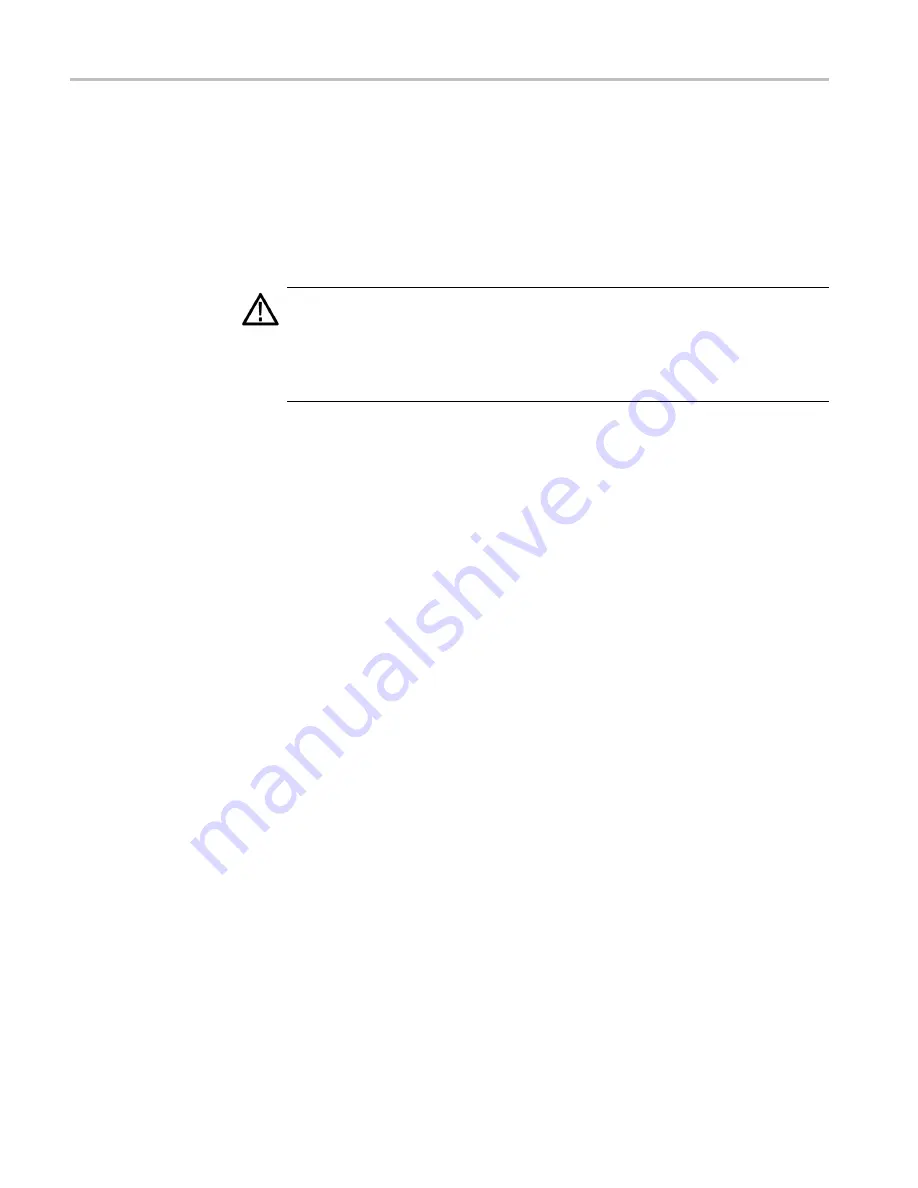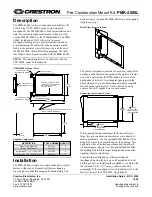
Installation Instructions
d.
Fix the length of the slide-out track assembly: Tighten the screws left
loose in step 1, substep c, applying 28 inch-lb of torque, to
fi
x the front to
rear
fl
ange spacing of the slide-out track assembly.
e.
Mount the left slide-out track assembly: Repeat substeps c through d to
mount the left slide-out track assembly.
3.
Mount the instrument in the rack:
WARNING.
To prevent the instrument from tipping or dropping onto the installers,
two or more people should install this instrument into the rack cabinet.
After completing the installation procedure, the installers should verify that the
instrument and rack cabinet will not tip forward while the instrument is in the
extended position.
a.
Install the instrument:
Working from the front of the rack, slide the inner track of each slide-out
track assembly until it extends out the front of the rack. Continue to slide
them out until they lock.
Insert the left and right tracks that extend from the rear of the instrument
into the ends of the tracks just extended. Make sure the tracks mounted on
the instrument slip inside the inner tracks extended earlier.
Slide the instrument backward until it stops.
Push to release the button latches, located on the outside of each track,
and continue to slide the instrument all the way into the cabinet.
b.
Level the rackmounted instrument:
Tighten the four screws that were left loose at the rear of the rack when you
did step 2, substep c, and then pull the instrument partially out of the rack.
Be sure that the four screws that were left loose at the front of the rack
are loose enough to allow the slide-out track assemblies to seek their
normal positions.
Retighten the four screws and push the instrument all the way into the
rack. If the tracks do not slide smoothly, readjust the level using the
method just detailed.
When leveling is completed, tighten the 10-32 screws using 28 inch-lb of
torque.
20
RMD5000 Rackmount Kit Instructions


































